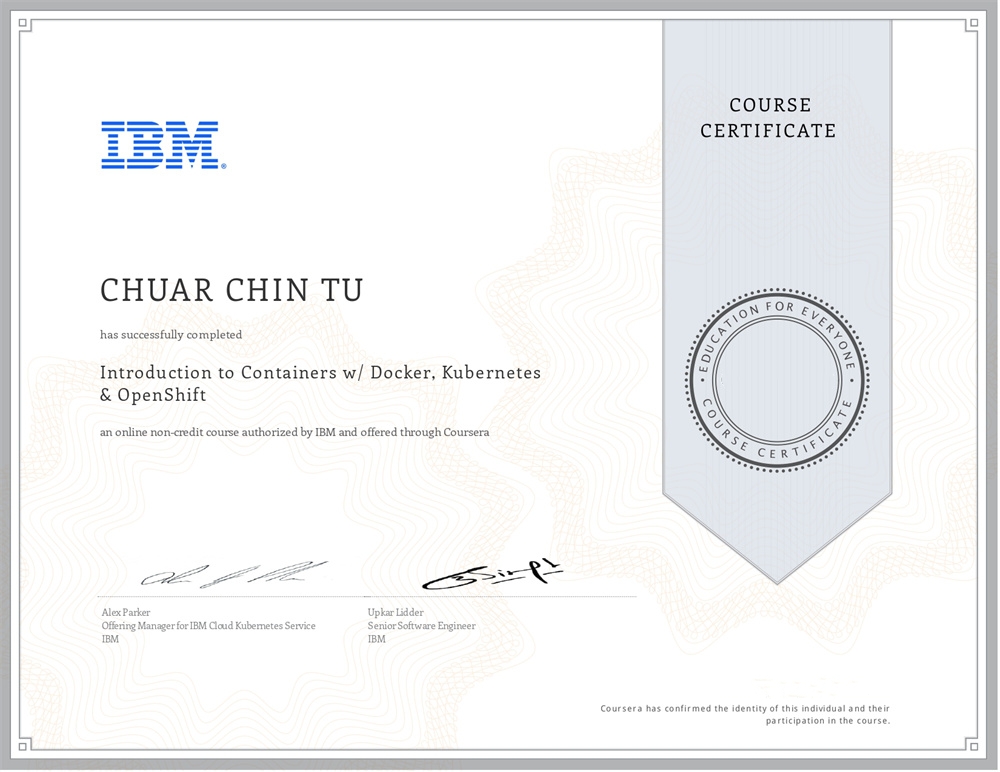Eric Chuar has completed the Introduction to Containers w Docker, Kubernetes & OpenShift for Personal & Professional Productivity and received a certificate from IBM.
SCHOOL:
IBM
GRADUATED:
2018
DURATION:
6 Months

OpenShift Skills Gained
Using containers, learn how to move applications quickly across any environment.
Describe and leverage Kubernetes architecture to set up and use an entire lifecycle-based container management system.
Build cloud native applications using Docker, Kubernetes, OpenShift, and Istio.
Create and leverage a YAML deployment file to configure and create resources such as pods, services, replicasets, and others in a declarative way.
Course Perspective
Just finished up the “Introduction to Containers w/ Docker, Kubernetes & OpenShift” course and I’ve got to say, it’s a game-changer. I always prefer to get my hands dirty before diving into any formal course. To me, a certificate is just a piece of paper that makes you look good to people who don’t know any better. The real value is in the skills and knowledge you gain, especially when you’re deep into digital marketing and programming like I am.
So, why did I pick this course? It’s all about efficiency and scalability, and that’s huge in the digital marketing world. Plus, I’m naturally curious and love sharing what I learn. And since I’ve been living in Malaysia and Singapore for years, I’m all about giving back to the community. Now that I have a family and a cute kid, the drive to share knowledge is stronger than ever.
So, what’s the rundown?
- Quick App Movement: One of the first things we tackled was how containers let you move applications super fast, across any environment. That’s a big deal if you’re looking to scale or just become more efficient.
- Cloud Native Apps: We dug into how to build cloud-native applications using Docker, Kubernetes, OpenShift, and Istio. This is like the building blocks of modern app development.
- Kubernetes Architecture: This was heavy but cool. We learned how to set up and use Kubernetes for container management throughout its entire lifecycle. If you want control over your containers, this is your playground.
- YAML Deployment: Last but not least, we got hands-on with creating YAML deployment files. These files help you configure and create resources like pods, services, replicasets, and more, in a way that’s easy to manage.
All in all, the course was a deep dive into the world of containers and it’s going to be super helpful in my career. I can’t wait to apply what I’ve learned, especially in my digital marketing projects. And you can be sure I’ll be sharing this knowledge, because what’s the point of learning if you keep it all to yourself, right?
